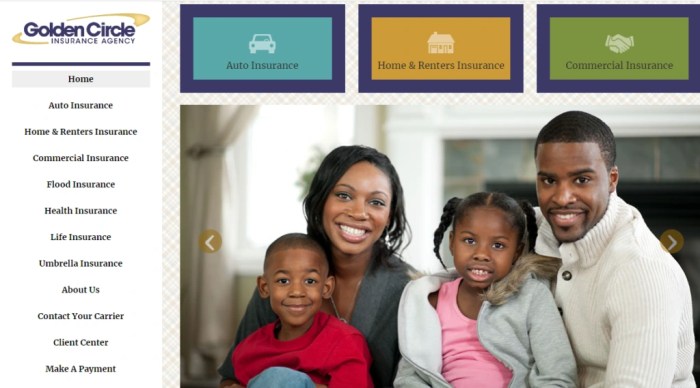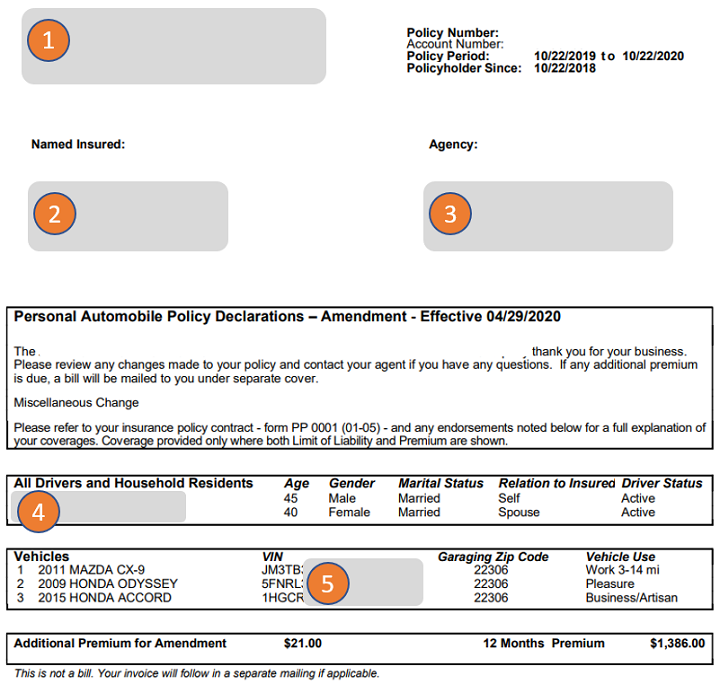Car insurance is a necessity for all Minnesota drivers, but navigating the complex world of quotes can be daunting. From understanding mandatory coverage types to factoring in your driving history and vehicle type, there are numerous factors that influence your premiums. This guide delves into the intricacies of car insurance quotes in Minnesota, providing valuable insights to help you secure the best possible coverage at a competitive price. We’ll explore the key factors that affect your quotes, including driving history, vehicle type, age, location, credit score, and coverage options. We’ll also provide a step-by-step guide on obtaining quotes from reputable providers in Minnesota, along with tips for comparing them effectively and choosing the right policy for your needs. Understanding Car Insurance in Minnesota Navigating the world of car insurance in Minnesota can be daunting, especially with the state’s unique laws and regulations. This guide will equip you with the essential knowledge to make informed decisions about your coverage. Mandatory Coverage Types in Minnesota Minnesota requires all drivers to carry specific types of car insurance, ensuring financial protection in case of accidents. These mandatory coverages are designed to safeguard both the driver and others on the road. Liability Coverage: This covers damages to other vehicles or property, and medical expenses for injuries you cause to others in an accident. Minnesota requires a minimum of $30,000 per person and $60,000 per accident for bodily injury liability, and $10,000 for property damage liability. Uninsured/Underinsured Motorist Coverage (UM/UIM): This protects you and your passengers if you are involved in an accident with an uninsured or underinsured driver. Minnesota requires a minimum of $25,000 per person and $50,000 per accident for UM/UIM coverage. Minnesota’s No-Fault System Minnesota operates under a no-fault insurance system. This means that after an accident, each driver files a claim with their own insurance company, regardless of who was at fault. Personal Injury Protection (PIP): This coverage pays for your medical expenses, lost wages, and other related costs after an accident, regardless of fault. Minnesota requires a minimum of $40,000 in PIP coverage. No-Fault Threshold: Minnesota’s no-fault system has a ”threshold” for seeking compensation from the at-fault driver. If your injuries are severe enough, you can ”break” the threshold and pursue a claim against the other driver’s insurance company. Types of Car Insurance in Minnesota Beyond the mandatory coverages, there are several additional types of car insurance that can provide further protection. Collision Coverage: This pays for repairs to your vehicle if it’s damaged in an accident, regardless of fault. This coverage is optional but highly recommended for newer vehicles or those with significant loan balances. Comprehensive Coverage: This protects your vehicle against damages caused by events other than accidents, such as theft, vandalism, or natural disasters. This coverage is also optional and often bundled with collision coverage. Rental Reimbursement: This covers the cost of renting a vehicle while yours is being repaired after an accident. This coverage can be helpful if you rely on your vehicle for work or daily errands. Roadside Assistance: This coverage provides help with situations like flat tires, dead batteries, or lockouts. It can be a convenient and cost-effective way to handle unexpected roadside emergencies. Gap Insurance: This coverage pays the difference between the actual cash value of your vehicle and the outstanding loan balance if your vehicle is totaled. This is particularly useful if you have a new vehicle or one with a high loan amount. Factors Affecting Car Insurance Quotes in Minnesota Several factors influence the cost of car insurance in Minnesota. Understanding these factors can help you make informed decisions to potentially lower your premiums. Driving History Your driving history is a significant factor in determining your car insurance rates. A clean driving record with no accidents or traffic violations will result in lower premiums. Conversely, a history of accidents, speeding tickets, or DUI convictions will increase your rates. Insurance companies view drivers with a history of accidents as higher risks, leading to increased premiums. Vehicle Type The type of vehicle you drive also impacts your car insurance costs. Sports cars, luxury vehicles, and vehicles with high-performance engines are generally more expensive to insure than standard sedans or hatchbacks. This is because these vehicles are often more expensive to repair or replace, and they may be more likely to be involved in accidents. Insurance companies assess the risk associated with each vehicle type, and their premiums reflect this assessment. Age Age plays a role in determining car insurance rates. Younger drivers, especially those under 25, are generally considered higher risks due to their lack of experience and higher likelihood of accidents. Insurance companies typically charge higher premiums for young drivers. However, as drivers gain experience and age, their premiums usually decrease. Experienced, older drivers are generally viewed as lower risks. Location Your location in Minnesota can impact your car insurance rates. Areas with higher crime rates or higher traffic density tend to have higher insurance premiums. Insurance companies factor in the likelihood of accidents and theft in specific areas when setting premiums. For example, insurance rates in densely populated urban areas might be higher than in rural areas with lower population density. Credit Score In Minnesota, insurance companies can use your credit score to determine your car insurance rates. While this practice is controversial, insurance companies argue that credit score is a reliable indicator of risk. Individuals with good credit scores are generally considered more responsible and less likely to file claims, resulting in lower premiums. Conversely, those with poor credit scores may face higher premiums. It’s important to note that this practice is not universal across all states, and some states prohibit the use of credit score for insurance pricing. Coverage Options The type of coverage you choose can significantly affect your insurance premiums. Higher coverage limits, such as comprehensive and collision coverage, will result in higher premiums. However, these coverages provide greater protection in case of accidents or damage to your vehicle. It’s essential to weigh the costs and benefits of different coverage options to determine the best fit for your needs and budget. Getting Car Insurance Quotes in Minnesota Navigating the world of car insurance quotes in Minnesota can seem daunting, but with a structured approach, you can find the best coverage at a competitive price. This guide will walk you through the process of obtaining quotes, providing insights into reputable providers and diverse quote-gathering methods. Reputable Car Insurance Providers in Minnesota Choosing a reputable car insurance provider is crucial. Minnesota boasts a diverse landscape of insurers, each with its own strengths and offerings. Here’s a list of some prominent providers: State Farm: Known for its widespread presence and comprehensive coverage options, State Farm is a popular choice for many Minnesotans. They offer a range of discounts and have a strong reputation for customer service. Progressive: Progressive stands out with its innovative features, such as its ”Name Your Price” tool that allows you to set your desired premium and find a policy that fits your budget. They are also known for their strong online presence and digital tools. American Family Insurance: American Family Insurance is a trusted provider with a focus on personalized service and community involvement. They offer a variety of coverage options and discounts, catering to diverse needs. Farmers Insurance: Farmers Insurance is a long-standing provider with a reputation for reliable coverage and competitive pricing. They offer a range of insurance products, including car, home, and life insurance. USAA: While primarily serving military members and their families, USAA is known for its exceptional customer service and competitive rates. If you qualify, USAA is a strong contender. Methods for Obtaining Car Insurance Quotes There are multiple ways to obtain car insurance quotes in Minnesota. Each method offers distinct advantages and disadvantages. Online: Online quote platforms are convenient and efficient. Many insurers offer online quote tools that allow you to compare rates and coverage options within minutes. This method offers the benefit of anonymity and allows you to compare multiple quotes simultaneously. However, it may lack the personalized touch of a phone call or in-person consultation. Phone: Calling an insurance agent directly allows for a more personalized experience. You can ask questions, discuss your specific needs, and receive tailored advice. However, this method can be time-consuming, as you may need to call multiple agents to compare quotes. In-Person: Meeting with an insurance agent in person offers the most comprehensive experience. You can discuss your needs in detail, ask questions, and receive personalized recommendations. However, this method requires scheduling an appointment and may be less convenient than online or phone quotes. Comparing Car Insurance Quotes in Minnesota Once you have gathered quotes from multiple insurance providers, it’s time to compare them side-by-side to find the best value for your needs. Comparing Car Insurance Quotes A key step in securing affordable car insurance is comparing quotes from various providers. To effectively compare, you’ll need to understand the different coverage options, premium amounts, and key features offered by each insurer. Here’s a sample table illustrating how you can compare quotes from different insurers: Provider Name … Read more




